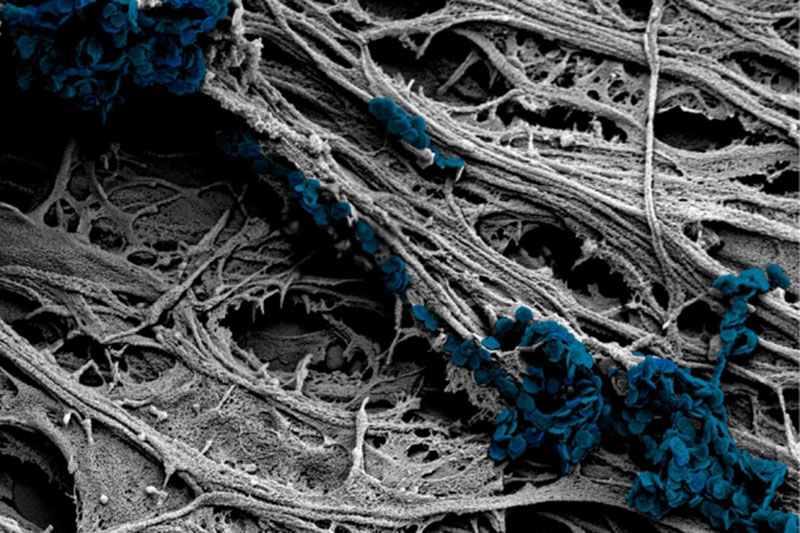
To manipulate neural cells, doctors and scientists routinely use two methods – electrical stimulation and chemical pharmaceuticals. However, these methods have their drawbacks. Chemicals are usually slow to take effect and have side effects, while electrical stimulation usually requires invasive wires, and is nearly impossible to administer within certain parts of the brain. Now, researchers at MIT and elsewhere have found a new method for stimulating neurons.
Read more Masimo Announces Bridge, A Wearable Neurostimulation Device That Reduces Opioid Withdrawal Symptoms
The finding might offer a step toward new kinds of therapeutic treatments, similar to electrically based neurostimulation that has been used to treat Parkinson’s disease and other conditions. Unlike those systems, which require an external wire connection, the new system would be completely contact-free after an initial injection of particles, and could be reactivated at will through an externally applied magnetic field, reports David L. Chandler at MIT News.
The researchers reported their finding in the journal ACS Nano.
“An interesting thing about the nervous system is that neurons can actually detect forces,” says MIT postdoc Alexander Senko PhD. “That’s how your sense of touch works, and also your sense of hearing and balance.” The team targeted a particular group of neurons within a structure known as the dorsal root ganglion, which forms an interface between the central and peripheral nervous systems, because these cells are particularly sensitive to mechanical forces.

The key to the new process was developing minuscule discs with an unusual magnetic property, which can cause them to start fluttering when subjected to a certain kind of varying magnetic field. These discs, which are hundreds of nanometers in diameter, contain a vortex configuration of atomic spins when there are no external magnetic fields applied. This makes the particles behave as if they were not magnetic at all, making them exceptionally stable in solutions. When these discs are subjected to a very weak varying magnetic field of a few millitesla, with a low frequency of just several hertz, they switch to a state where the internal spins are all aligned in the disc plane. This allows these nanodiscs to act as levers — wiggling up and down with the direction of the field, the MIT report said.
Read more This Wearable Device Can Improve Speech of People Living with Parkinson’s Disease
The work is still in its infancy, said Polina Anikeeva, an associate professor in the departments of Materials Science and Engineering and Brain and Cognitive Sciences. “This is a very first demonstration that it is possible to use these particles to transduce large forces to membranes of neurons in order to stimulate them.”











